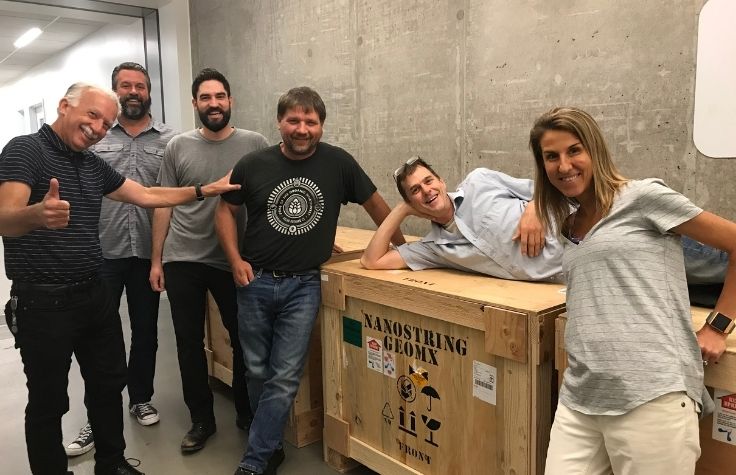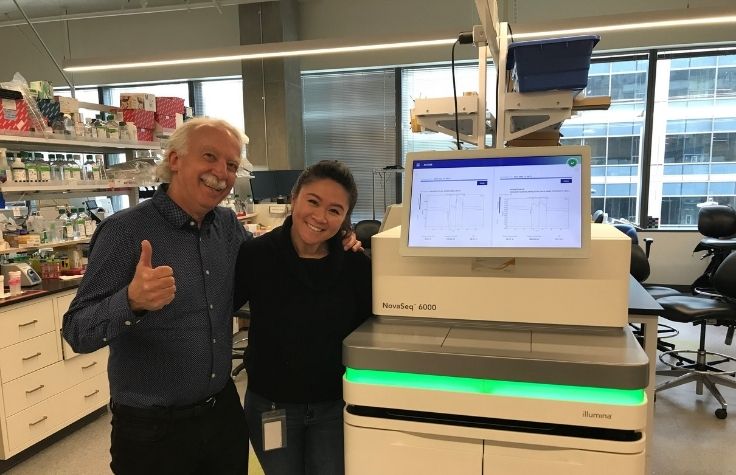
1 June 2022
Joseph Beechem, Ph.D., Chief Scientific Officer and Senior Vice President of Research and Development at NanoString Technologies, fondly remembers a presentation he gave at the Advances in Genome Biology and Technology (AGBT) conference a few years ago. He described how NanoString was using its technologies with Illumina sequencers to read spatial RNA and protein information.
After the presentation, former Illumina CEO Jay Flatley approached and asked if they were really using Illumina instruments to read proteins. “Yes,” said Beechem, “we do it all the time.”
It was the early days of a beautiful friendship between Illumina and NanoString, and now that relationship is being renewed once more at the upcoming AGBT conference. As it has for the last four years, NanoString will be hosting a pre-conference Spatial Multiomics Symposium, and Illumina will be playing a significant role in those discussions.
The age of spatial awareness
Until recently, gene expression studies mainly were two-dimensional. Samples were blended and sequenced, which produced incredible data but lost information about where the expression originated in a tissue sample. Now, researchers can leverage NanoString products, such as their GeoMx® Digital Spatial Profiler (DSP), with Illumina sequencers to measure expression of RNA and protein while retaining spatial context.
“We’re in the middle of one of the biggest revolutions in life science biology,” says Beechem. “Spatial multiomics is changing the way life science research gets done.”
In addition to seeing which genes are being expressed, spatial omics allows researchers to measure differential expression between cells.
Previously, scientists often used fluorescent markers to see just a handful of transcripts. The GeoMx DSP tools can quantify up to 22,000 RNA species and around 150 proteins with spatial resolution. This technology helps answer the when, where, and how much questions regarding gene and protein expression in specific tissues.
This approach is bringing enormous benefits to researchers and clinicians. When COVID-19 first hit, people knew very little about the virus. A number of major medical centers around the world developed a rapid-autopsy program to extract tissue in order to better understand the disease. By necessity, this tissue had to be extensively “fixed” in order to ensure all active virus was killed. This combination of heavily-fixed tissue and need for an unbiased spatial profiling of the affected organs meant that NanoString DSP was the only tool available to accomplish these studies. These whole transcriptome atlas spatial biology COVID-19 discovery studies have now appeared in over 12 publications, including 2 in Nature, 3 in Nature Communications, and 1 in Cell.
“We had no clue about the biology that was destroying people’s lungs and had other effects on the body,” says Beechem. “If you don’t know anything about the biology, you have to look at everything, and that’s what spatial multiomics allowed us to do.”
The technology helped analyze more than 18,000 human genes, locate the virus, and measure the many different functions it was dysregulating, providing new insights into how COVID-19 led to severe illness and death in some patients.
The same approaches also benefit cancer research. Spatial readouts can interrogate the ongoing battles between tumors and the immune response. For example, analyzing patient samples before and after checkpoint inhibitor treatment can illuminate how cancer and immune systems respond to the therapy.

A strong partnership
Illumina and NanoString have partnered for several years to marry next-generation sequencing with spatial multiomics. The latest NextSeq™ systems are ideal for this application since they incorporate DRAGEN™ bioinformatics chips into the instrument, simplifying the process.
“This allows users to push a button and get whole transcriptomes from all these different regions in space and bring it all back together with the high-resolution images,” says Beechem.
The goal is to make these workflows simple for researchers who are accustomed to looking at pathology images but who aren’t necessarily NGS experts. As a result, they can now gain critical gene expression information without losing the spatial context.
AGBT 2022
The ability to conduct whole transcriptome spatial analyses is still relatively new and will be a hot topic at the Spatial Multiomics Symposium, held at 12 pm EDT on June 6, a few hours before AGBT starts. Beechem will be one of the main speakers, as will Mike Lelivelt, Illumina’s Vice President of Software Product Management, who will be discussing the DRAGEN Spatial Pipeline.
“NanoString and Illumina have succeeded in developing a true push-button, spatial whole transcriptome workflow,” says Beechem. “We’ll be talking about that and what this technology will be enabling over the coming year. It’s exciting—like the early days of NGS, when we discovered something totally new every week.”


